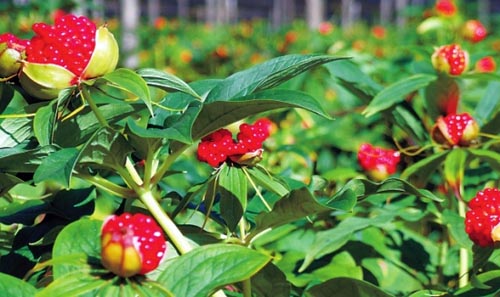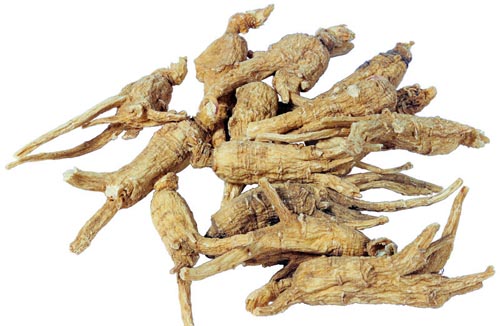The source is from the root of Panax Quinquefoliurn, L. family Campanulaceae. The medicinal material mainly grows in U. S. A.,Canada, and France and cultivated in China as well, and in autumn the roots with 3 – 6 year's growth are harvested. After it is processed by being peeled and smoked with Liuhuang (Sulfur) and then dried, it is called as "peeled Xiyangshen", and used crudely with sliced pieces.
Medicinal Properties: Sweet and slightly bitter in flavor, cold in nature, and attributive to the heart, lung and kidney meridians.
Actions: Supplement qi and nourish yin, clear away fire and promote the production of the body fluids.

Application
1. It is applied for exuberant fire due to deficiency of yin manifested as cough with dyspnea and bloody sputum. It is usually combined with Zhimu (RhIzoma Anemarrhenae ), Chuanbeimu (Bulbus Fritillariae Cirrhosae) and Ejiao ( Colla Corii Asini) , etc..
2. For febrile diseases causing damage to both qi and yin with manifestations of dysphoria, fatigue and thirst, it can be decocted singly; or used together with Shengdihuang (Radix Rehmanniae) and Xianshihu (Herba Dendrobii, fresh), etc., and others that can nourish yin, clear away heat and promote the production of the body fluids.
Usage and Dosage: 3 - 6 g is decocted and mixed with other medicines after being decocted separatedly.
Notes: Contraindicated for coldness and dampness in the stomach due to deficiency and weakness of middle energizer yang. It is incompatible with Lilu (Rhizoma et Radix Veratri).








